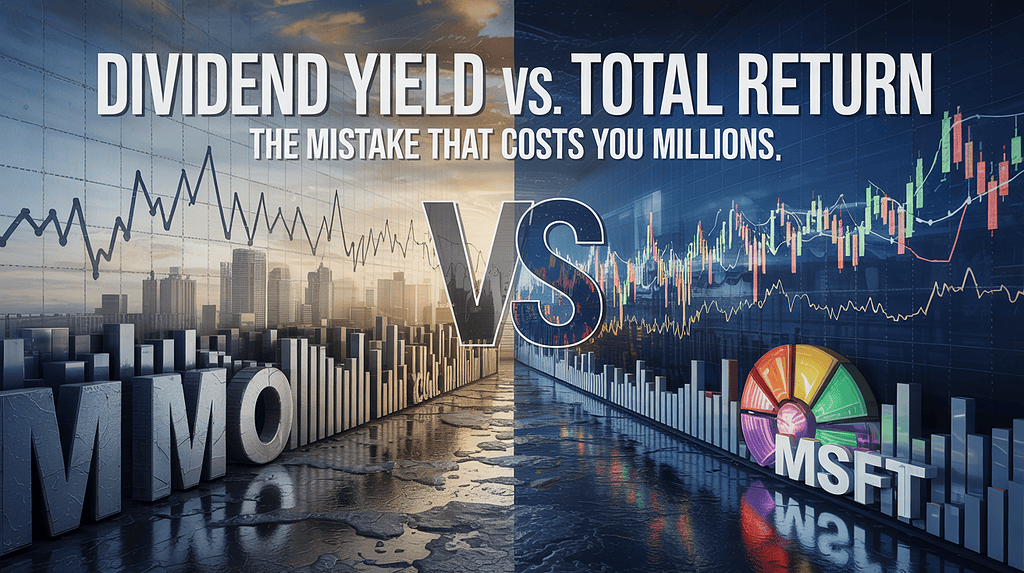
As a dividend growth investor, you are often caught trying to balance yield and growth. Is Stock A yielding 3% with 10% dividend growth rate better than Stock B yielding 2% but 15% dividend growth rate? Figuring this out seems like a complex process, shifting through various growing income streams and then figuring out which income stream gives you the biggest return on your investment today. Now suppose you do this with 1000s of stocks as you evaluate the for a spot in your portfolio. This process is time consuming and slow.
Enter the Chowder Rule, a simple shortcut that has gained traction among dividend investors. Chowder Rule takes the 2 numbers – dividend yield and dividend growth rate, and creates a simple filter that allows you to quickly identify dividend growth candidates.
In this article, we will discuss what is Chowder Rule, review its limitations and assess how this rule fits best as a part of a broader investment strategy.
What is Chowder Rule?
The Chowder Rule combines dividend yield and dividend growth rate to create a “Chowder Number”.
Chowder Number = Dividend Yield + 5 Year Dividend Growth Rate
For most stocks, you are looking for a Chowder Number ≥ 12% before you may consider the stock as an addition to your portfolio. For high-yielding stock (yield > 4%), you want the Chowder Number to be ≥ 8.
If a stock yields low, say 1%, then you want the dividend growth rate to be high to make up for it. For higher yielding stock, you do not necessarily need a high dividend growth number to ensure that your position compounds rapidly when you reinvest the dividend. The goal is to provide both current income and future growth potential and the growth can come from either growing dividends reinvested, or higher yield reinvested or a mix of both.
How to Use the Chowder Rule to Filter Stocks?
You should apply the Chowder number filter after you have a shortlist of dividend stocks that you may be interested in. You want consistent dividend payers. You can find lists of Dividend Aristocrats, Dividend Kings, or Dividend Achievers that list stocks that have consistently paid and raised their dividends for 25, 50 or 10 years straight. These stocks tend to be well established companies that have a good moat in the marketplace and are committed to returning capital to the shareholders in a disciplined manner.
There are cases when a stock falls out of one of these lists because the company cuts or eliminates the dividend. To avoid this scenario, make sure you also screen for whether the company can afford to continue paying the current dividend. You can do this by requiring a dividend payout ratio of under 60%.
Once you have the shortlist of the stocks you want, it is now time to calculate the Chowder number. Gather the dividend yield and the 5 yr dividend growth rate data for each of the stocks in your list and calculate the Chowder Number by summing them. Once done, compare the Chowder Number for each stock against the thresholds. The stocks that pass the comparison are the stocks you can invest in.
For Example,
- Stock A: Dividend Yield = 3%, 5-Year Dividend Growth Rate = 10% → Chowder Number = 13 (passes).
- Stock B: Dividend Yield = 5%, 5-Year Dividend Growth Rate = 2% → Chowder Number = 7 (fails).
Chowder Number is a quick and easy way to prioritize stocks with a blend of yield and growth. It is especially useful for new investors or if you are managing a large watchlist. Once you have experience running your portfolio for some time, you may want to consider adding additional analysis before you buy stocks. Chowder Number, as we will see, is not without its flaws.
Key Concern: The Mathematical Flaw of the Chowder Rule
Investments compound geometrically. In the case of dividend growth stocks, your investment returns are based on the compounding of the current dividend yield, growth in the dividend, and the growth in the share price. All these multiply to generate your returns.
Chowder Rule assumes an arithmetic growth by simply adding the yield to the dividend growth rate. This ignores how yield and growth interact in the long term, although the arithmetic and geometric calculations are going to be similar in the short-term.
Additionally, Chowder Rule may lead you to a company with very high dividend growth rate. If you do not pay attention to other metrics, you may end up investing in a company that is growing rapidly and is therefore able to grow its dividend rapidly. The stock in question may actually be very overvalued in the market as investors bid it up for its growth. The Chowder Rule may indeed lead you to a growing dividend investment, but if the stock price is not sustainable, you will lose value of your investment in the long term. To avoid these potential issues, you should also consider the valuation metrics and overall financial health of the company and whether the industry is an expanding industry or a declining one.
Essentially, use the Chowder Rule as a shortcut, but not as a template to build and manage your dividend growth portfolio for the long term.
Practical Tips for Using the Chowder Rule Wisely
- Use it as a starting point: Filter your watchlist through the Chowder Rule but do not just end your analysis here. Continue on to do further deeper analysis.
- Focus on sustainability of the dividend: Ask if the dividend is sustainable and whether the company has enough earnings and cash flow to continue to pay and grow the dividend over time.
- Keep the bigger picture in mind: Over valuation increases risk. You want your investments to be in line with your risk tolerance. Consider qualitative and valuation metrics to make sure that this investment meets your other investment criteria.
To sum up, Chowder Rule is a great shortcut to quickly filter for desired blend of dividend yield and dividend growth rate. However, it is limited in nature due to it being an arithmetic function instead of a geometric one. Keep this in mind and consider other attributes before you decide to allocate your capital to any of the stocks in your watchlist.
Photo by Jean-Luc Picard on Unsplash

Shailesh Kumar, MBA is the founder of Astute Investor’s Calculus, where he shares high-conviction small-cap value ideas, stock reports, and investing strategies.
His work has been featured in the New York Times and profiled on Wikipedia. He previously ran Value Stock Guide, one of the earliest value investing platforms online.
Subscribe to the Inner Circle to access premium stock reports and strategy insights.
Featured in:







